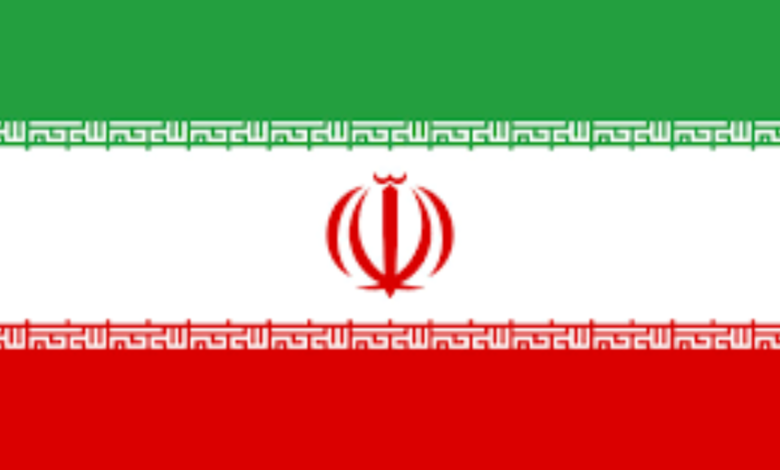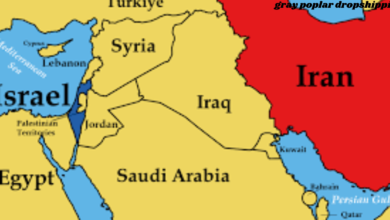The Iran Flag: Symbolism, History, and Significance

The national flag of Iran, with its rich history and profound symbolism, represents more than just a piece of cloth—it is a vivid emblem of the country’s values, culture, and history. The flag is deeply intertwined with the identity of the Iranian people and plays a crucial role in the national consciousness. In this article, we will explore the Iran flag’s design, historical evolution, symbolism, and its significance in shaping the nation’s identity.
The Iran Flag: An Overview
The current flag of Iran is a beautiful representation of the nation’s history and cultural values. It consists of three horizontal stripes of equal width—green at the top, white in the middle, and red at the bottom. Each color is significant and carries a particular meaning that reflects the values of the Iranian state. In the center of the white stripe, there is a unique emblem that symbolizes the country’s Islamic identity. The flag’s proportions are 4:7, meaning the length is nearly twice as long as its height.
The flag’s design, adopted in 1980 after the Islamic Revolution of 1979, is a combination of traditional and religious symbolism. The green color represents the Islamic faith and the ideals of peace and growth. The white symbolizes purity and peace, while the red stands for the courage, valor, and sacrifices of the Iranian people throughout history. The emblem in the center of the flag is a stylized representation of the word “Allah,” representing the Islamic faith and the nation’s spiritual heritage.
The Iran flag’s design and color choices were carefully selected to embody the Islamic Republic’s core principles: justice, unity, and the triumph of peace over conflict. It serves as a visual declaration of Iran’s unique cultural and religious identity.
Historical Evolution of the Iran Flag
The history of Iran’s national flag is as colorful and dynamic as the country itself. Before the flag we know today, Iran had several different flags, each one marking a different era in the nation’s history. The earliest Iranian flags were used by various empires, such as the Achaemenid Empire, which had a distinct golden standard symbolizing their dominance.
During the Qajar Dynasty (1789-1925), the flag of Iran was mostly influenced by Western ideals, adopting a more simplified design with a lion and a sun emblem, which became a defining feature of the flag. This design remained in use until the early 20th century.
The Pahlavi Dynasty (1925-1979) saw significant changes to Iran’s flag. Under the reign of Reza Shah and later his son Mohammad Reza Shah, the flag took on more modern and nationalistic elements. In 1964, the Pahlavi flag was modified, adding a golden emblem of a lion and sun in the center, symbolizing the strength and historical grandeur of the Iranian monarchy.
However, the most drastic change to the flag came after the 1979 Islamic Revolution. The overthrow of the monarchy and the establishment of the Islamic Republic of Iran led to the adoption of the current flag. This new flag, with its three color bands and Islamic emblem, reflected the nation’s transition to a theocratic state founded on Islamic values. The Islamic Republic’s flag was officially approved by the Iranian government on July 29, 1980, and has since remained a symbol of national unity and Islamic faith.
Symbolism and Meaning Behind the Iran Flag
One of the most significant aspects of the Iran flag is its deep symbolism. Each color and design element on the flag carries powerful meaning that reflects the country’s Islamic, cultural, and national identity. The flag is more than a simple national symbol—it is a representation of Iran’s values and the nation’s journey through history.
Colors of the Iran Flag
The three colors on the flag—green, white, and red—hold profound significance. The green at the top of the flag represents Islam, which is the dominant religion in Iran. It symbolizes the faith, peace, and growth that are central to Iranian society. For the people of Iran, the color green represents hope, prosperity, and the future.
The white stripe in the middle of the flag symbolizes peace and purity. It is a call for unity and peace both within Iran and across the world. The color white also signifies the country’s commitment to peace and diplomacy in its relations with other nations.
The red color at the bottom of the flag stands for courage, valor, and sacrifice. It honors the bloodshed and struggles that the Iranian people have endured throughout their history, particularly during times of war and revolution. The red color is a testament to the bravery of those who fought for Iran’s independence and sovereignty.
The Emblem in the Center
In the center of the white stripe is an emblem that is deeply symbolic of Iran’s Islamic identity. The emblem is a stylized representation of the word “Allah” (God), and it is formed from four smaller shapes that together create a geometric pattern. This emblem not only reflects the Islamic faith that forms the foundation of the Iranian government but also signifies the unity of the nation under the guidance of God.
Surrounding the emblem is a series of Arabic inscriptions that say “Allahu Akbar” (God is Great), which is a powerful reminder of Iran’s commitment to Islam and divine authority. This phrase is repeated 22 times along the borders of the flag, signifying the importance of faith and divine guidance in the lives of the Iranian people.
The Iran Flag and its Role in National Identity
The Iran flag is far more than just a symbol—it plays a crucial role in the national identity of the Iranian people. It is a representation of unity, a constant reminder of the nation’s struggles and triumphs, and a symbol of pride and honor.
Symbol of Unity
For the Iranian people, the flag is a unifying force. Regardless of political, religious, or ethnic differences, the flag of Iran stands as a symbol of shared identity and history. It brings together Iranians from all walks of life, symbolizing a common bond rooted in the values of Islam, independence, and national pride.
During national holidays, protests, and religious ceremonies, the flag of Iran is often seen flying high, reinforcing a collective sense of belonging. Whether at international sporting events or local community gatherings, the Iran flag is an expression of unity and solidarity among the people.
Representation in International Diplomacy
The flag also plays an essential role in Iran’s international relations. In diplomatic settings, the Iran flag serves as a powerful symbol of the Islamic Republic’s sovereignty and independence. Whether at the United Nations, international summits, or bilateral meetings, the Iran flag stands proudly as a representation of the country’s presence on the global stage.
In addition to its diplomatic role, the flag also serves as a symbol of resistance and resilience. For many Iranians, it signifies the country’s ongoing struggle to maintain its sovereignty, dignity, and independence in a turbulent global environment.
Conclusion
The Iran flag is a powerful symbol that encapsulates the nation’s rich history, cultural identity, and religious heritage. Its design, colors, and emblem carry deep meanings that reflect the values of peace, unity, sacrifice, and faith. As Iran continues to face both internal and external challenges, the flag remains a steadfast reminder of the strength and resilience of the Iranian people.
Frequently Asked Questions (FAQs)
- What does the emblem on the Iran flag represent?
- The emblem represents the word “Allah” (God) and signifies the nation’s Islamic identity. It also includes the phrase “Allahu Akbar” (God is Great), reinforcing the role of religion in Iranian life.
- When was the current Iran flag officially adopted?
- The current Iran flag was officially adopted on July 29, 1980, following the Islamic Revolution of 1979.
- What are the different flags used in Iran throughout history?
- Iran’s flags have changed throughout history, with notable designs during the Qajar Dynasty and Pahlavi era. The current flag was introduced after the 1979 revolution.
- What do the colors on the Iran flag symbolize?
- Green symbolizes Islam and peace, white stands for purity and peace, and red represents courage and sacrifice.
- Why is the Arabic inscription featured on the Iran flag?
- The Arabic inscription, “Allahu Akbar” (God is Great), reinforces the flag’s Islamic symbolism and emphasizes the divine guidance in Iran’s national identity.
- Can the Iran flag be flown outside the country?
- Yes, the Iran flag can be flown internationally, particularly in Iranian embassies, consulates, and cultural centers around the world.
- How does the Iran flag compare to other Islamic country flags?
- The Iran flag shares certain features with other Islamic country flags, such as the use of green and Arabic inscriptions, but its unique emblem and color arrangement make it distinctive.
- What events or occasions are the Iran flag prominently displayed?
- The Iran flag is displayed during national holidays, religious ceremonies, protests, international sports events, and diplomatic meetings.





